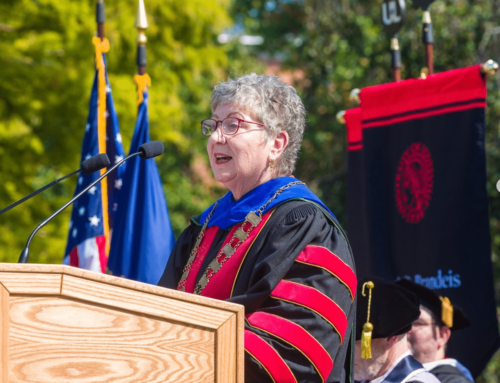A doctor’s role in society has remained unchanged for centuries. The job of a doctor is to help others and to earn the trust of their patients. In Nazi Germany, however, physicians often used medical science for sinister purposes.
Located a few miles north of the University of Louisville Belknap Campus, the Kornhauser Library on the Health Sciences Campus is the current home of the Deadly Medicine Holocaust memorial traveling exhibit.
The Nazi view was that the Darwinian concept of survival of the fittest should be aggressively applied to German society, and keeping handicapped people alive was considered biologically counterproductive. So the task of forcing sterilization on so-called genetically unfit and ethnically unclean populations was given to Nazi physicians, all for the cause of building an Aryan master race.
“Physicians constituted one of the largest professions in Nazi Germany,” said Michel Atlas, a reference librarian at the Kornhauser Library. “So the exhibit really shows how doctors—people we trust with our lives—used science to perpetuate racism in that era.”
The traveling exhibit began in 1991 and supplements the United States Holocaust Memorial Museum in Washington, D.C. Through the help of Dr. Robert Steiner at the School of Public Heath and Laura Schweitzer, the dean of the School of Medicine, the traveling exhibit was brought to the Kornhauser Library for the Louisville community to see.
Ultimately, I hope that we medical students all remember how much trust our society places in physicians,” said Rick Bowles, a student at the School of Medicine and 2012 class president. “We should recognize that it is our responsibility, not only as physicians but simply as people, to prevent anything like this from ever happening again.
Visitors can find the exhibit’s maze-like arrangement set up in the library’s lobby. A casual stroll along the winding path shows walls filled with historical photographs, Nazi propaganda, videos and fact sheets about the science of eugenics, and how it was used for evil.
Felix Garza, head of Public Access Services at the Kornhauser Library, explained that several high school groups have visited the library to view the exhibit, and were met with pensive silence.
“It was very interesting to watch them,” said Garza. “When they arrived, they were talking and laughing with each other, like teenagers do. But they grew more and more serious when they went further into the exhibit.”
According to Atlas, U of L student turnout wasn’t as high as the high school student turnout. This is largely due to a glitch that occurred in the Kornhauser Library Web site, which was modified for the new year.
“The glitch eliminated the press release that was on the library’s Web site,” said Atlas. “However, the exhibit will continue until the end of January, so I hope more students will make their way to see it.”
Most medical students simply discovered the exhibit when they went to the library to study.
“I was surprised to discover the Holocaust Museum exhibit when I went to the Kornhauser library,” said Bowles. “Perhaps it is due to the tendency of medical students to miss much of what is happening outside class, but I was unaware of its arrival until I walked through the library doors.”
Accompanying the traveling exhibition, a lecture series has also been featured in the Kornhauser Library, centering upon a variety of topics, including genetics, medical ethics, genocide, military propaganda and biology.
For more information on the Deadly Medicine Holocaust exhibit and the lecture series, visit: http://kla-itrt.org/uofl/kornhauser-library/kornhauser-exhibits.






